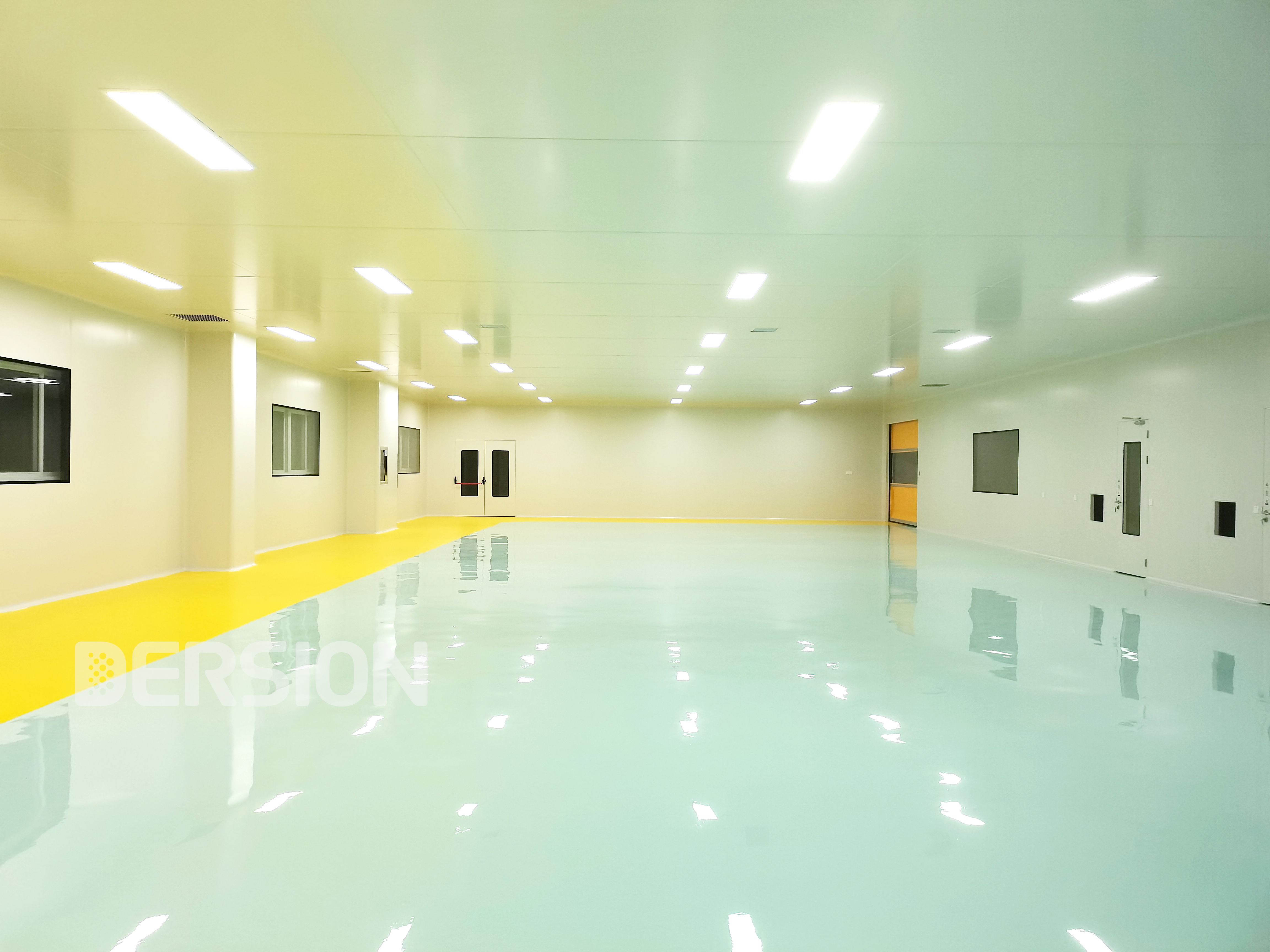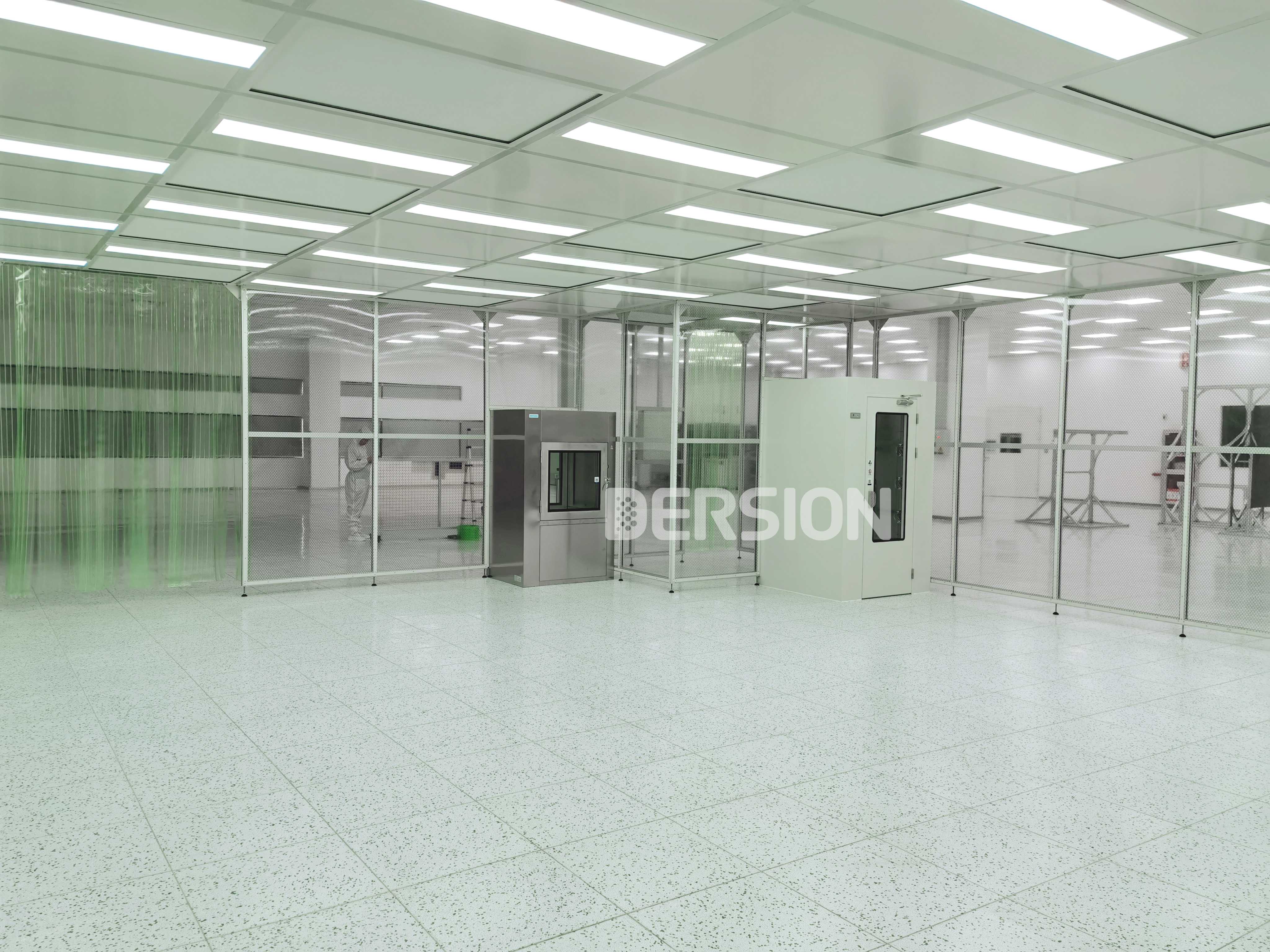The main functions of modular clean room and clean booth are the same, but the materials used, control systems, and sealing are essentially different. As customers have higher and higher requirements for the aesthetics and cleanliness of products, modular clean rooms are becoming more and more recognized and widely used. In this article, we will discuss the difference between prefabricated modular clean room and clean booth, focusing on appearance, airtightness, materials, and cleanliness.
The first difference lies in the appearance and airtightness of modular clean rooms and clean booth. A modular clean room is surrounded by double-layer black hollow tempered glass with beautiful edges. This design has several advantages. Firstly, it enhances the aesthetics and can be built as a highlight of the enterprise. Secondly, the smooth inside and outside surfaces do not accumulate dust, making it easy to clean. Lastly, the double-layer glass effectively maintains positive pressure, preventing internal and external convection contamination.
On the other hand, a clean booth is surrounded by PVC, which is a durable and cost-effective material. While not as visually appealing as the double-layer glass, PVC provides good airtightness, protecting the interior from external pollutants. However, it is important to note that the lack of transparency and aesthetic appeal can be a disadvantage for some applications where visual inspection is important.
Another significant difference between modular clean room and clean booth lies in the materials used. modular clean rooms are usually constructed using high-quality, durable materials such as aluminum or stainless steel panels. These panels are specially designed to be smooth, easy to clean, and resistant to corrosion. They are also non-porous, preventing the accumulation of dust and other contaminants. Moreover, the joints and connections between panels are carefully sealed, ensuring airtightness and minimizing the risk of contamination.
In contrast, clean booths commonly utilize PVC or other similar materials that offer good resistance to chemicals and weather conditions. While these materials may not have the same level of durability as aluminum or stainless steel, they can still provide adequate protection against dust, dirt, and external pollutants. However, it is crucial to regularly inspect and maintain the clean booth’s materials to ensure their longevity and effectiveness.
Maintaining cleanliness is a crucial aspect of both modular clean rooms and clean booths. However, the methods of achieving cleanliness may differ. Modular clean rooms often feature advanced control systems that regulate temperature, humidity, and airflow. These systems rely on HEPA (High-Efficiency Particulate Air) filters to remove microorganisms and other airborne particles, ensuring a clean and controlled environment. Additionally, the smooth surfaces and non-porous materials of modular clean rooms make them easier to clean and sanitize, further maintaining the desired level of cleanliness.
In comparison, clean booths may not have the same level of sophisticated control systems. However, they can still maintain cleanliness through regular cleaning and disinfection practices. The use of cleanroom-grade cleaning agents and equipment can help eliminate dust and contaminants, ensuring a satisfactory level of cleanliness for specific applications. It is worth noting that the cleaning frequency and procedures may vary depending on the specific requirements of the industry and products involved.
In conclusion, while the main functions of modular clean rooms and clean sheds are the same – providing a controlled, clean environment – there are differences in appearance, airtightness, materials, and cleanliness. Modular clean rooms offer a more aesthetically pleasing and highly controlled solution with durable materials and advanced control systems.Clean booths, on the other hand, provide a cost-effective alternative that still ensures cleanliness through regular cleaning and maintenance. Understanding these differences can help businesses make informed decisions when choosing between these two options for their cleanroom needs.
Post time: Sep-27-2023
